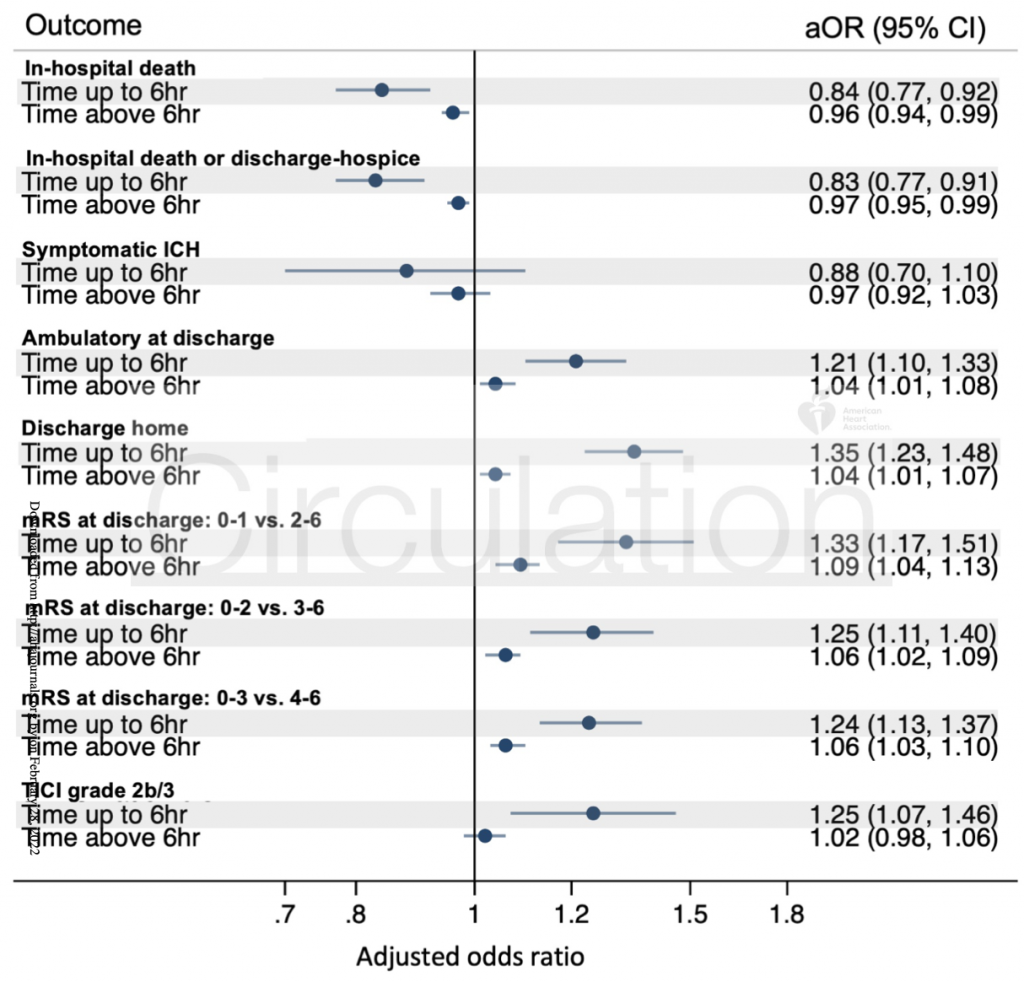פוסט זה זמין גם ב:
עברית
Written by Meghan Breed
Spoon Feed
Time from symptom onset of a basilar artery occlusion (BAO) to endovascular therapy (EVT) of less than 6 hours compared to greater than 6 hours (up to 24 hours) was associated with lower odds of in-hospital mortality, disability, symptomatic intracranial hemorrhage, and higher odds of ambulation at discharge, discharge home and reperfusion.
Why does this matter?
BAO accounts for 1-4% of all ischemic strokes but has a disproportionately high morbidity and mortality. Recanalization rates with intravenous thrombolysis are relatively low; however, benefit of endovascular therapy has been poorly studied. Two of the most recent randomized control trials, BEST (Liu et al. Lancet Neurol 2020) and BASICS (Langezall et al. NJEM 2021) were inconclusive for benefit of EVT versus medical therapy alone.
De-clot the basilar
Data were prospectively collected from the stroke registry maintained by AHA. 3,015 patients were identified as having BAO and treated with EVT within 24 hours of symptom onset. Of the total patients included in the study, 1,304 (43.3%) were treated within 6-hours of symptom onset. Primary clinical outcomes were in-hospital mortality, independent ambulation status at discharge, and discharge home. Secondary clinical outcomes included in-hospital death or discharge to hospice and dichotomized modified Rankin score. The technical efficacy outcome was modified Thrombolysis in Cerebral Infarction (mTICI) score of 2b to 3 indicating 50%-100% reperfusion, and the safety outcome was identification of symptomatic intracranial hemorrhage defined by worsening neurologic status. Association of outcomes from time to EVT were reported for patients who received intervention less than 6 hours from symptom onset or between 6 to 24 hours from symptom onset. Odds ratios were then calculated and time-benefit curves were generated for the specified outcomes and were consistently more favorable in the less than 6 hour treatment group. Despite improvement in clinical outcomes with expedited EVT, morbidity and mortality still remains high for posterior circulation strokes – 28.1% of all patients died in the hospital, and only 22.7% of patients were discharged home. The figure tells the story best.

Source
Association Between Endovascular Therapy Time to Treatment and Outcomes in Patients with Basilar Artery Occlusion. Circulation. 2022 Jan 20. doi: 10.1161/CIRCULATIONAHA.121.056554. Online ahead of print.





